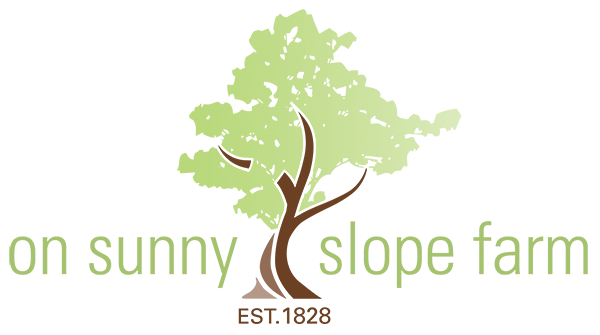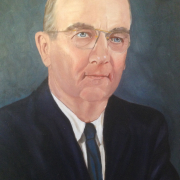Discover On Sunny Slope Farm’s New Poultry History Museum
This article was first posted on NewLeader http://www.newsleader.com/story/life/2014/08/09/rockingham-showcases-fine-feathered-heritage/13848685/
The folks in Harrisonburg and Rockingham County are poultry proud…and they have every reason to crow a little bit about their fine-feathered heritage.
It’s a fact that the modern chicken and turkey industries go directly back to farms in Rockingham County. Today the county leads the state in agricultural production, due in no small part to its strong poultry industry. That story is something that many in the region were probably vaguely aware of, after all who can miss the giant turkey statues at the south and north ends of the county declaring Rockingham as the turkey capital?
And, after the Rockingham County Fair, which runs Monday through Saturday, 100,000 more folks will know about the poultry heritage in Rockingham. If you think you can’t miss the turkey statue at the county line (installed in 1955) then wait until you see the newly unveiled giant turkey and giant chicken flanking the entrance to the new poultry heritage building and new live poultry display building on the fairgrounds. Both were dedicated last week to a large turnout of local officials, industry officials and families whose history is intertwined with the poultry industry.
As long as there have been family farms in the Shenandoah Valley, there have been barnyard chickens and turkeys providing meat and eggs for the dinner (or breakfast) table. For the most part, though, any profit from barnyard flocks came from the farmwife selling or bartering eggs at the local country store.
But back in the 1880s, a boy named Samuel Blosser became curious about whether or not he could hatch chickens without a mother hen sitting on the eggs. He made some observations that included putting thermometers underneath nesting hens to determine at what temperatures eggs were being warmed. No doubt the hens were rather annoyed by the process, but Blosser was persistent and in 1885, using a box filled with sawdust and hot water from a tea kettle, he successfully hatched chicks using artificial incubation.
Electricity further enhanced the artificial incubation process, and in the 1930s, a Rockingham fellow named George Jordon ran an electric line directly from the new Shenandoah Valley Electric Co-op to his hatchery. By the late 1930s, every little community in Rockingham County had a hatchery — to the tune of 34 hatcheries turning out 1.4 million chickens a week.
That was chickens, but turkeys were still considered a little too wild for such confinement. The dominant domestic turkey at the time was the bronze turkey, a big sturdy animal that ruled the barnyard and roosted in trees. Farmers growing larger numbers of turkeys kept the animals in fields. When it came time to take the animals to market, they were driven for miles along the road. The lead tom turkey in the flock sometimes wore a little bell just like cows had bells. I have interviewed elderly men who, as boys, were paid a few cents to drive turkeys from points west, like Highland County, to the railroads in the Valley. The streets of places like Monterey and Harrisonburg were often filled with flocks of bronze turkeys being gathered and driven to market.
But then a Rockingham man named Charles Wampler Sr. turned the turkey world upside down and took the industry out of the realm of a little nest egg of money for the farmwife and into the mainstream of agricultural production. Wampler was actually Rockingham’s first extension agent for which he was paid $37.50 a month, but he eventually left that job to tend to the family farm full time. Turkeys had always been a part of his family’s farm. When he was a boy, his mother had paid him a few cents to search out the hidden turkey nests and gather the eggs. He eventually bought a turkey for $7 and began developing and breeding a strong strain of bronze turkeys.
Wampler was a visionary and wondered why, if you could incubate chicken eggs successfully, that the same thing couldn’t be done with turkeys. He wrote all the agricultural colleges in the country, according to his son, 98-year-old Charlie Wampler Jr., and only one, a professor from Virginia Tech, gave him encouragement. “All the others told him that turkeys were by nature wild and would never grow in confinement,” remembered Wampler Jr.
So Wampler built an incubator and in 1922, when he hatched 52 turkey eggs at Sunny Slope Farm just outside of Harrisonburg, the modern turkey industry in America was born. For that and many other innovations in the turkey world, he earned a place in the Poultry Hall of Fame as the Father of the Modern Turkey Industry.
The story of the Wamplers and the Blossers as well as the Stricklers, who started Rocco Feeds in Harrisonburg, is all part of the exhibits housed in the new Virginia Poultry Exhibit. “Locally Grown, Feeding the World,” reads the signs above the doorways of the new building. Who hasn’t noticed the 13-story Rocco feed mill in downtown Harrisonburg for instance? This new exhibit puts all those intertwining stories together for the first time.
The exhibit was curated by Lee Anne Biller, a local woman who grew up in the poultry industry and currently manages George’s Hatchery in Harrisonburg where 1.7 million chickens are hatched every week. Wouldn’t Samuel Blosser and Charles Wampler Sr. have been impressed with those numbers?
For Biller, the last months of putting together the exhibit and learning about the history of her community has been an exciting journey. Not only did the group that she led turn up many artifacts from poultry’s past, old waterers, chicken crates, advertising calendars, signs, feed bags and egg crates, but they interviewed many of the families involved in the industry and created a video archives.
“Those early pioneers were so forward thinking,” she said. “And they were such good businessmen. They made good decisions and were willing to take risks.”
She pointed to pioneers like R.B. Strickler and Charles Wampler in particular. Of Wampler she said, “I was reading in one of the old journals of Charles Wampler Sr. and he was doing all his own genetics work. He had pens of toms and of hens and bred them for certain characteristics. Now geneticists have big computers and hire consultants. All he had were his eyes and the power of observation.”
For Biller, it was also a journey into her own past. She found records about her grandfather selling turkey eggs. Looking back at the area poultry history brought back some “unpleasant” memories as well she said with a laugh. “In my house the rule was that the last one in had to get up and help water and feed the turkeys the next morning. It seemed like that was always me and not my brother!”
The poultry industry that those early pioneers helped launch has never faltered in the Valley. Wampler soon became the recognized expert in the nation. After he artificially incubated those first turkeys, he helped his daughter raise a flock of artificially brooded turkeys for her 4-H project. He also was a pioneer in turkey nutrition, and he wrote the first contract between a grower and a feed supplier during the Great Depression when the farmer didn’t have enough money to buy the birds outright. In the contract, Wampler supplied the birds and enough feed to get the birds to market and then the farmer and Wampler worked out how the profits would be shared so that next year’s flock was already financed.
By 1929, Wampler was selling his booklet, “Wampler’s Practical Turkey Methods,” for one dollar. “When you remember that it takes less feed to produce a pound of turkey than a pound of pork or a pound of beef, you can readily see that turkey meat should play a far more important part in our daily food,” he wrote in the beginning of the book, pointing out that the average American consumed less than one turkey a year at that time.
Charles Wampler Sr. truly knew what he was talking about but even he probably could not have imagined that Virginia’s poultry industry today would account for, directly or indirectly, 42,000 jobs and represent an $8 billion dollar industry in the commonwealth.
For his part, Charles Wampler Jr., a poultry pioneer and industry leader in his own right, was pleased to see the history exhibit preparing to open in a few days for the county fair. “A lot of young people don’t know much about the history of how it all started. My daddy did it right here in 1922. He started the whole industry in the United States.”
So before Rockingham County Fair goers hit the midway or stuff themselves with cotton candy, they should make a point to check out the live poultry exhibit in a brand-new building and then walk right next door past the giant turkey and giant chicken dedicated to the poultry producers of the county, and learn more about the fine-feathered heritage right here in the Valley.




